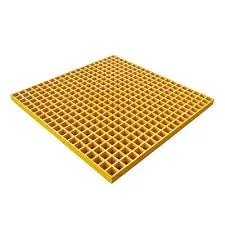Understanding the Benefits and Applications of FRP Pipes in Modern Infrastructure Projects
Understanding FRP Pipes A Modern Solution for Various Industries
The evolution of materials used in construction and manufacturing plays a crucial role in enhancing efficiency, durability, and sustainability. One such innovation is the use of Fiber Reinforced Polymer (FRP) pipes. FRP pipes are engineered materials made from a polymer matrix reinforced with fibers, commonly glass, carbon, or aramid. This unique combination offers a plethora of advantages, making FRP pipes an increasingly popular choice across a range of industries.
Benefits of FRP Pipes
One of the standout features of FRP pipes is their incredible strength-to-weight ratio. Unlike traditional materials such as steel and concrete, FRP pipes are lightweight, making them easier to handle and install. This characteristic can significantly reduce labor costs and installation time, providing a more efficient solution for pipeline projects.
Moreover, FRP pipes boast exceptional corrosion resistance. Many industries, such as oil and gas, water treatment, and chemical processing, frequently encounter harsh environments where corrosion can lead to costly repairs and maintenance. The non-metallic composition of FRP pipes ensures they withstand exposure to a variety of corrosive substances, extending the life span of the piping system and reducing long-term costs.
Another key advantage is the flexibility of FRP pipes. They can be manufactured in various shapes and sizes, tailored to meet specific project requirements. This adaptability allows for easier integration into existing systems and the ability to navigate around obstacles, minimizing the need for extensive modifications or alterations to the surrounding infrastructure.
Applications of FRP Pipes
frp pipe

The applications of FRP pipes are diverse, spanning multiple sectors. In the water and wastewater industry, FRP pipes are used for transporting potable water, sewage, and industrial waste efficiently. Their resistance to corrosion ensures that the quality of the water is maintained, while also achieving significant savings in maintenance and replacement costs.
In the oil and gas sector, FRP pipes are employed in offshore and onshore applications. Their lightweight nature reduces the load on supports and structures, making them an ideal choice for platforms and pipelines in challenging environments. Additionally, their resistance to chemicals makes them a safe option for transporting various fluids without the risk of leakage or degradation.
The utility industry also appreciates the advantages of FRP pipes. They are utilized in a variety of applications including power generation, chemical processing, and telecommunications for conduit systems. The durability and long service life of FRP pipes contribute to the reliability of these essential services.
Sustainability and Environmental Impact
As industries turn towards more sustainable practices, the environmental benefits of FRP pipes cannot be overlooked. They are often manufactured using less energy compared to traditional materials and can be designed for longevity, resulting in decreased waste and resource consumption over time. Furthermore, many FRP products can be recycled, thus contributing to a circular economy.
Conclusion
In conclusion, FRP pipes represent a significant advancement in piping technology, offering a unique blend of strength, durability, and flexibility. Their ability to resist corrosion and withstand harsh conditions makes them suitable for a wide array of applications in different sectors. As industries continue to seek efficient and sustainable solutions, the adoption of FRP pipes is likely to grow, establishing them as a staple in modern infrastructure projects. Adopting these innovative materials will not only enhance operational efficiency but also pave the way for environmentally responsible practices in the years to come.
Latest news
-
Oblate Tanks: Space-Saving, Durable Liquid Storage SolutionsNewsAug.27,2025
-
High-Performance Piping System Solutions for Industry & Commercial UseNewsAug.26,2025
-
Precision Fittings: Durable & Reliable Industrial & Plumbing SolutionsNewsAug.25,2025
-
Practical Steps: Unlock Success with Our Proven GuidesNewsAug.24,2025
-
Transport Tanks: Safe, Durable & Efficient Liquid HaulingNewsAug.23,2025
-
High-Quality Piping Systems for Efficient Flow & DurabilityNewsAug.22,2025











